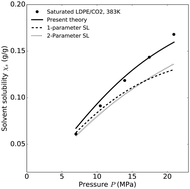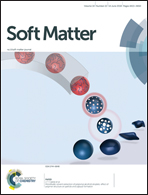Application of a constant hole volume Sanchez–Lacombe equation of state to mixtures relevant to polymeric foaming
Abstract
A variant of the Sanchez–Lacombe equation of state is applied to several polymers, blowing agents, and saturated mixtures of interest to the polymer foaming industry. These are low-density polyethylene–carbon dioxide and polylactide–carbon dioxide saturated mixtures as well as polystyrene–carbon dioxide–dimethyl ether and polystyrene–carbon dioxide–nitrogen ternary saturated mixtures. Good agreement is achieved between theoretically predicted and experimentally determined solubilities, both for binary and ternary mixtures. Acceptable agreement with swelling ratios is found with no free parameters. Up-to-date pure component Sanchez–Lacombe characteristic parameters are provided for carbon dioxide, dimethyl ether, low-density polyethylene, nitrogen, polylactide, linear and branched polypropylene, and polystyrene. Pure fluid low-density polyethylene and nitrogen parameters exhibit more moderate success while still providing acceptable quantitative estimations. Mixture estimations are found to have more moderate success where pure components are not as well represented. The Sanchez–Lacombe equation of state is found to correctly predict the anomalous reversal of solubility temperature dependence for low critical point fluids through the observation of this behaviour in polystyrene nitrogen mixtures.



 Please wait while we load your content...
Please wait while we load your content...